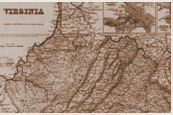A Call for Reconciliation
Smithsonian Source: Primary Sources
The Economic Cost of Revolution
Smithsonian Source: Primary Sources
Letter from an American Farmer
Smithsonian Source: Primary Sources
Description: This collection of documents illustrates differing perspectives on the American Revolution. In the document A Call for Reconciliation, Clergyman William Smith proposes that in time America will once again be able to coexist with Britain and war is not necessary. In The Economic Cost of Revolution loyalist Charles Ingles outlines the tremendous debts that the colonies would occur due to the imbalance of the value of the current imports and exports. A Letter from an American Farmer describes the character of the “new” American who will leave behind Europe. All of these perspectives seem to be rational discussions which can be contrasted with the Sons of Liberty’s actions including tarring and feathering and the Boston Tea Party. This contrast illustrates that the political feelings of colonists were more dynamic than just people being patriots and loyalists.
Teaching Tips:
"Do Now" Suggestion
- Discuss different perspectives of the American colonists on the eve of the Revolution. Why wouldn’t everyone want independence? How do these perspectives differ from the Sons of Liberty’s?
- Assign small groups one of the historical perspectives. Have them analyze and present the reasoning behind their piece.
- After reading and analyzing the perspectives, have students create a political cartoon or a broadside based on one of the historical perspectives.



